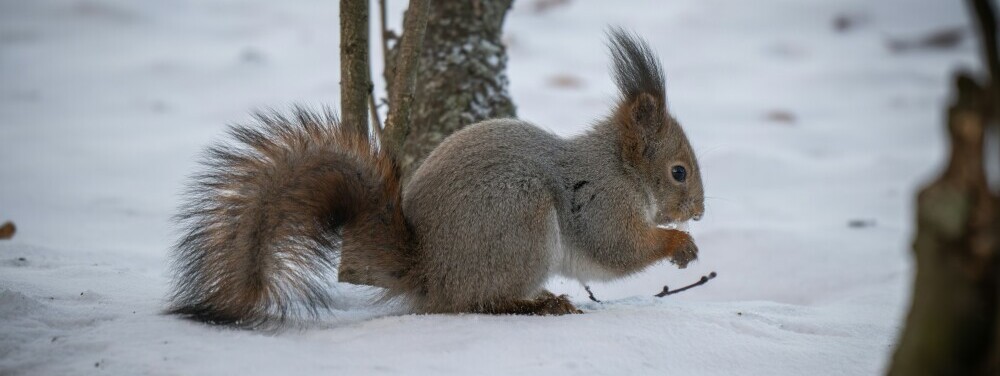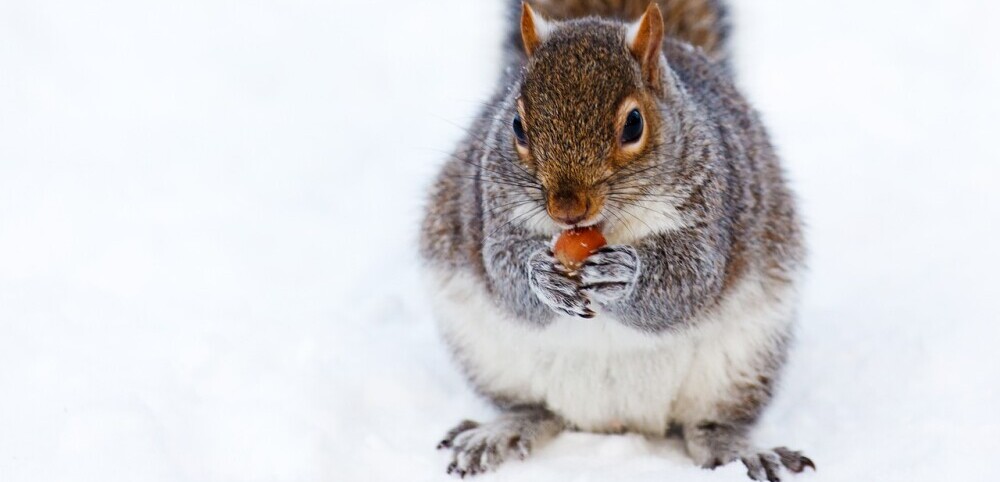How Do Squirrels Survive Winter?
As winter blankets the landscape with its icy grip, the natural world undergoes a remarkable transformation. Amidst this frosty domain, one creature stands out for its remarkable ability to thrive in the harshest of conditions – the squirrel. From their bushy tails to their nimble movements, squirrels have adapted ingenious strategies to endure the challenges posed by winter’s chill. In this article, we delve into the fascinating world of squirrel survival, exploring the mechanisms they employ to brave the cold and secure their place in the winter landscape.

Preparing for the Cold
Before winter sets in, squirrels engage in meticulous preparation to fortify themselves against the impending cold. One key aspect of this preparation is gathering food. Squirrels are known for their hoarding behavior, stockpiling nuts, seeds, and other food items during the abundant months of autumn. These caches serve as vital reserves to sustain them through the lean winter months when food sources become scarce.
Adaptations for Thermoregulation
Surviving winter requires more than just a well-stocked pantry; it also demands effective thermoregulation. Squirrels possess several adaptations to combat the cold. Their dense fur provides insulation, keeping body heat trapped close to the skin. Additionally, squirrels may undergo physiological changes, such as increasing their metabolic rate or growing thicker coats, to better cope with colder temperatures. In extreme cold, squirrels may also resort to huddling together for warmth, a behaviour observed in many other social mammals.
Shelter and Nesting Behaviours
Finding suitable shelter is crucial for squirrels to withstand the rigors of winter. Many squirrel species build elaborate nests, known as dreys, high up in the branches of trees. These nests offer insulation from the cold ground and protection from predators. Squirrels may also seek refuge in dens or hollowed-out tree trunks, further shielding themselves from the elements.
Behavioural Adaptations
In addition to physical adaptations, squirrels exhibit various behavioural strategies to survive winter. One such behaviour is torpor, a state of reduced metabolic activity that allows squirrels to conserve energy during periods of extreme cold or food scarcity. By entering torpor, squirrels can significantly lower their energy requirements, enabling them to endure prolonged periods without food.
Resourcefulness and Opportunism
Squirrels are renowned for their resourcefulness and adaptability, traits that serve them well in winter. In times of scarcity, squirrels may resort to opportunistic feeding behaviours, exploiting alternative food sources such as bird feeders or scavenging for overlooked nuts and seeds. This adaptability enhances their chances of survival in challenging conditions.
In the face of winter’s harshness, squirrels emerge as resilient survivors, equipped with a suite of adaptations and behaviours honed through evolutionary time. From their diligent food caching to their adept thermoregulatory mechanisms, squirrels exemplify nature’s ingenuity in overcoming adversity. As we marvel at these small yet tenacious creatures, let us gain a deeper appreciation for the intricate web of life that sustains us all.

FAQ Section:
Q1: Do all squirrel species exhibit the same winter survival strategies?
A1: While many squirrel species share similar survival tactics, there can be variations based on factors such as habitat and geographic location. For instance, tree squirrels may rely more heavily on tree-based shelters, whereas ground squirrels might burrow underground for protection.
Q2: How do squirrels locate their food caches during winter?
A2: Squirrels possess remarkable spatial memory and keen olfactory senses, allowing them to locate food caches with remarkable accuracy. They rely on a combination of memory and scent cues to rediscover hidden stashes, even beneath layers of snow.
Q3: Do squirrels hibernate during winter?
A3: Unlike some other mammals, squirrels do not hibernate in the true sense. Instead, they may enter brief periods of torpor to conserve energy during extreme cold or food shortages. Torpor allows squirrels to reduce metabolic activity temporarily while remaining semi-active and responsive to their surroundings.


